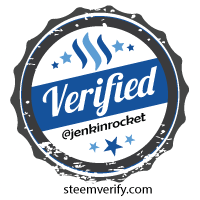
We're not quite there yet, but now is the time to be most concerned for Steemit. With the mention of our platform in Newsweek we can expect a slow but steady trickle of press begin to turn to a torrent over the next few years.
This is good, but it means a few things.
The number one thing is that there are going to be competitors. We haven't seen it yet, but I predict that a real competitor to Steemit will appear within the next three years. The thing to worry about, I think, isn't a platform that enacts some sort of compensation system. Steemit has that down pat, and has too much of a head start working out the kinks of it. What we need to worry about is a platform that is conceptually and aestheticallysuperior to all currently available social media platforms.
Granted Steemit has an unbelievable head start. Granted that the platform is revolutionary on a conceptual level. But as we begin to discuss design changes on the platform (and while we're talking about design, check out @liberosist's article Suggestions for a Compressed View - it's a discussion that sort of needs to happen sooner rather than later. And those of you thinking 'but we should fix other issues first!' should check this out), we really need to talk about where Steemit and any other social media applications on the Steem blockchain are headed.
So far Steemit is good. Steemit is really good. In fact, even without the 'get paid' and blockchain aspects, I think Steemit is still on par with any blog-type app or site out there. Even without the 'get paid' aspect, it's closing in on Facebook (once the site is seemless and sign up is painless, it'll be officially slightly better).

But let's face it: Facebook is already dead on its feet and has been waiting for a new contender to knock them over for some time now. Therefore, 'slightly better' may not be good enough. To not only unseat the king but fend off any would be usurpers, you need special appeal. The money aspect is great, but there needs to be something else. Facebook won the social media wars over Myspace because it had a superior design. It streamlined the messiness by reducing the social interactions to a one-size-fits-all essentials package. This simplicity also positioned it to work more efficiently in the age of cell phones. Moreover, it's simplicity and exclusivity made it spread through colleges like wildfire (originally you could only sign up if you received an invite from another user), taking an entire generation by storm (I remember being ambivalent towards setting up an account until two friends of mine literally sat me down and started an account for me without telling me what they were doing - once I realized I shrugged in resignation).
Steemit has these kinds of fans, but lacks that simplicity of process for reasons any one reading this should know.
But I'm not really here to complain about that. I want to talk about further down the line, about what I want from Steemit five years from now.
The future is changing at a breakneck pace, and we'll soon be looking at ubiquitous VR apps and devices, as well as phones that run much more interesting apps. People are looking for new and more interesting ways to connect and interact with each other.... this is something that Steemit has with it's upvote system, but my argument is that this isn't going to be quite enough several years from now.
I think people are going to want a network that they can feel. The internet as a set of pages is gradually fading. We're not quite there yet because the tech and infrastructure isn't quite there yet, but I know it's on the horizon. Steemit needs to be very wary of a social media platform that is poised for VR, augmented reality, and the age of super smart phones.
When I conceptualize what I want from a social media platform, I think of wanting to be able to interact very simply with others. And ya'll, Steemit kind of requires work and dedication. These are big no-no's in social media (and were part of Myspace's problem).
So the question is: how do you design a platform that can engage audiences at any level?

My answer is a social media platform that can operate in VR, augmented reality, or in a browser (maybe in simplified form - a desktop app for all bells and whistles). In my mind this takes the form of a series of nodes that are floating as a sort of nebula and can be filtered in various ways. Each of the basic nodes would represent a person, and you could color code topics such that each node would become a different color based on how heavily individuals were talking about certain topics within the last 24 hours.
This would be ideal for the virtual reality and augmented reality of a few years from now. You could zoom in on nodes, having sub nodes (posts) appear in orbits around them. You could reach out and move the nodes, and they would visibly react. This is important.
But most of all, I want this new platform to have its own language. I know, I know, stick with me.
I think that platforms need to get conceptually simpler than they are right now. I think that was the lesson of Facebook vs. Myspace. They at least need to have a concept for what I call path of least resistance interaction. But to do this, they need to gain another level of complexity: namely, platforms need their own symbolic language.
This is not some bullshit, off the cuff idea. I've been rolling this around in my head for years, well before I'd heard of Steemit. Facebook grew in part because of its exclusivity. But it's a trick that won't work the same way twice. There needs to be a new form of exclusivity: one that require participants to learn an engaging symbolic language that is, in part, of their own creation.

Social networks do this naturally. Steemit and Steemians have their own lingo and terminology, some of which is official and some not. But what if there were attractive symbols that had the ability to give nuanced meanings to these ideas? They'd be made by artists to be aesthetically pleasing, and would be released slowly every couple of months, allowing users to wrap their head around them and use them not only in their posts, but also as the core of their nodes when visualizing the platform.
Moreover, users could create their own symbols and would receive some form of compensation (i.e. an automatic partial upvote with a minimum value or a small fraction of SP when they are used, etc.). Each user would have their own room, and that room would contain symbols that would quickly relate the thoughts and ideas of that person in a series of configured symbols relating nuanced, complex ideas that required little actual reading.
This is only the preliminary idea, and I continue to work on it. My point is that Facebook got simplicity right, but there's actually a big issue: you can't really go much deeper, even if you want to. There's a hollow feeling to Facebook, a shallowness that you feel. It's a 'popcorn' connection: good for a light snack, but hardly comparable to actually understanding, connecting with, or getting to know someone. How do you design a platform that goes deeper? It's a large question, but I feel like whatever platform can answer that question will be the ultimate winner of the new blockchain social media future.

Friday, October 27th, 2017